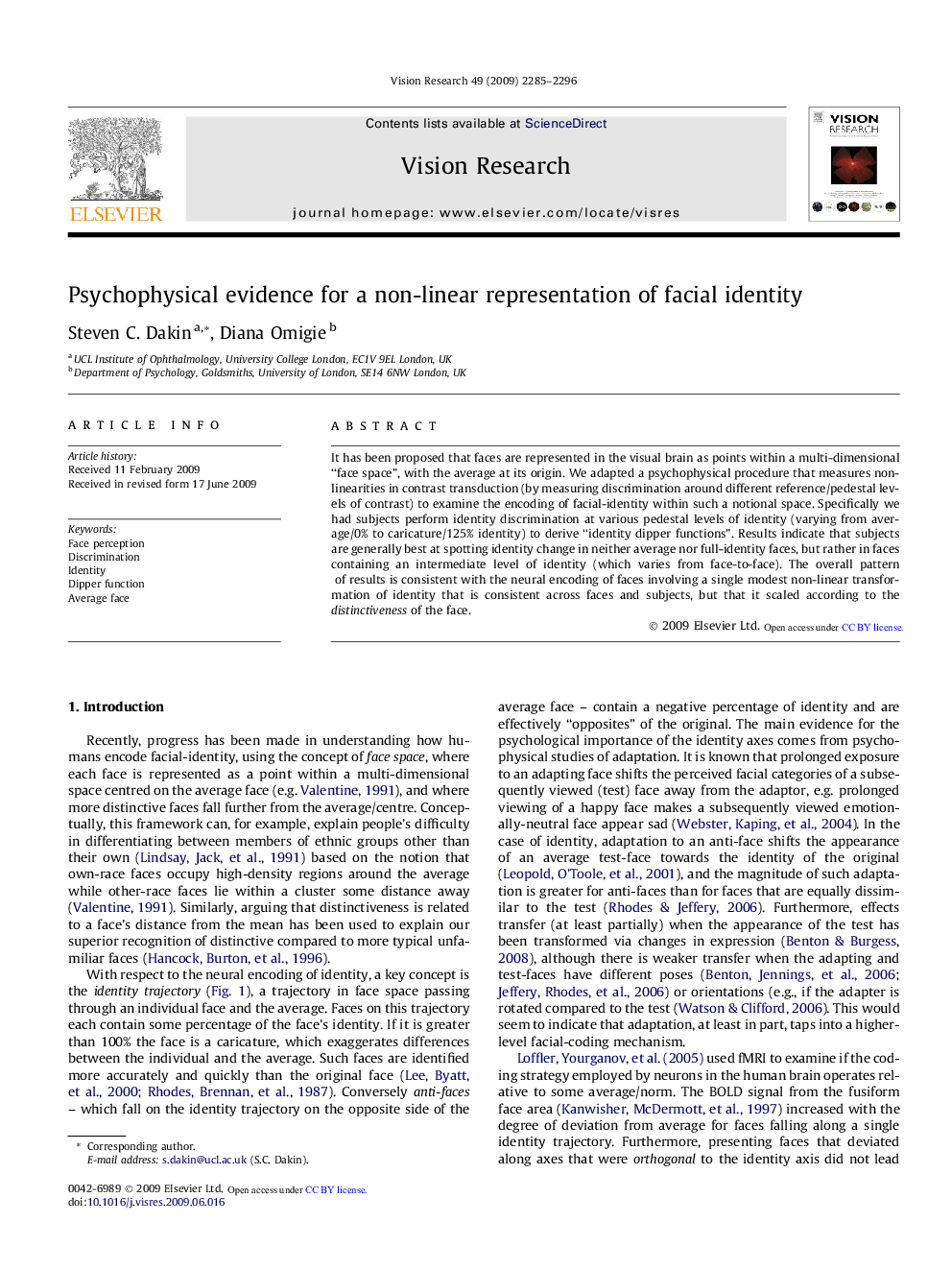| Article ID | Journal | Published Year | Pages | File Type |
|---|---|---|---|---|
| 6203938 | Vision Research | 2009 | 12 Pages |
It has been proposed that faces are represented in the visual brain as points within a multi-dimensional “face space”, with the average at its origin. We adapted a psychophysical procedure that measures non-linearities in contrast transduction (by measuring discrimination around different reference/pedestal levels of contrast) to examine the encoding of facial-identity within such a notional space. Specifically we had subjects perform identity discrimination at various pedestal levels of identity (varying from average/0% to caricature/125% identity) to derive “identity dipper functions”. Results indicate that subjects are generally best at spotting identity change in neither average nor full-identity faces, but rather in faces containing an intermediate level of identity (which varies from face-to-face). The overall pattern of results is consistent with the neural encoding of faces involving a single modest non-linear transformation of identity that is consistent across faces and subjects, but that it scaled according to the distinctiveness of the face.
